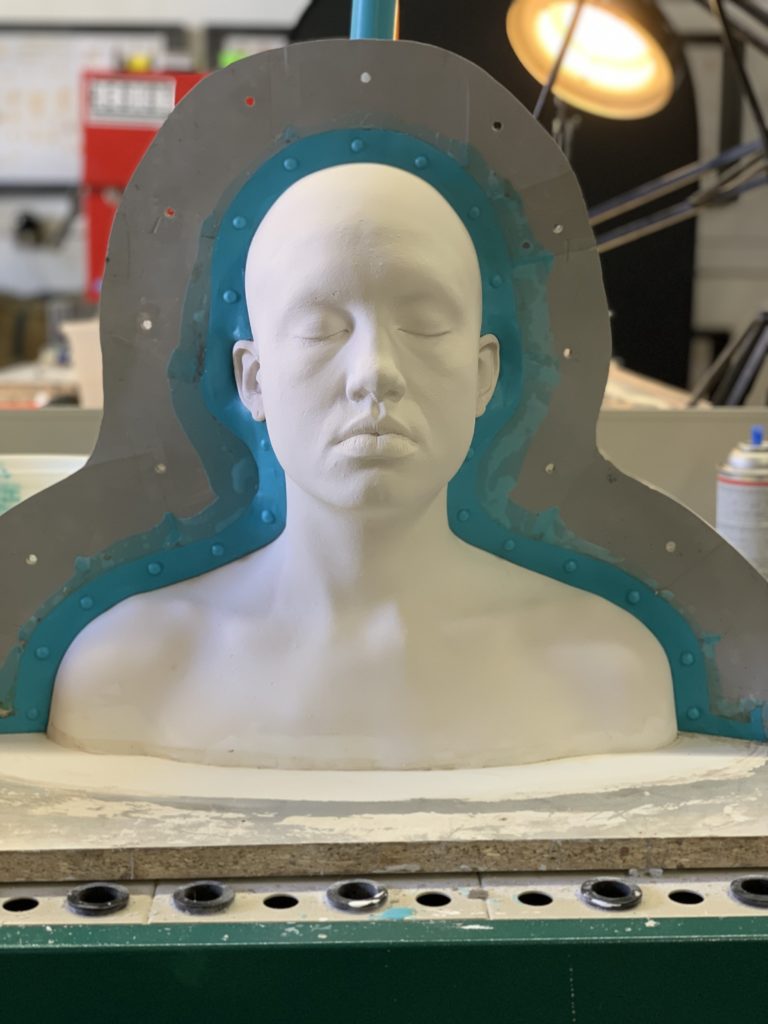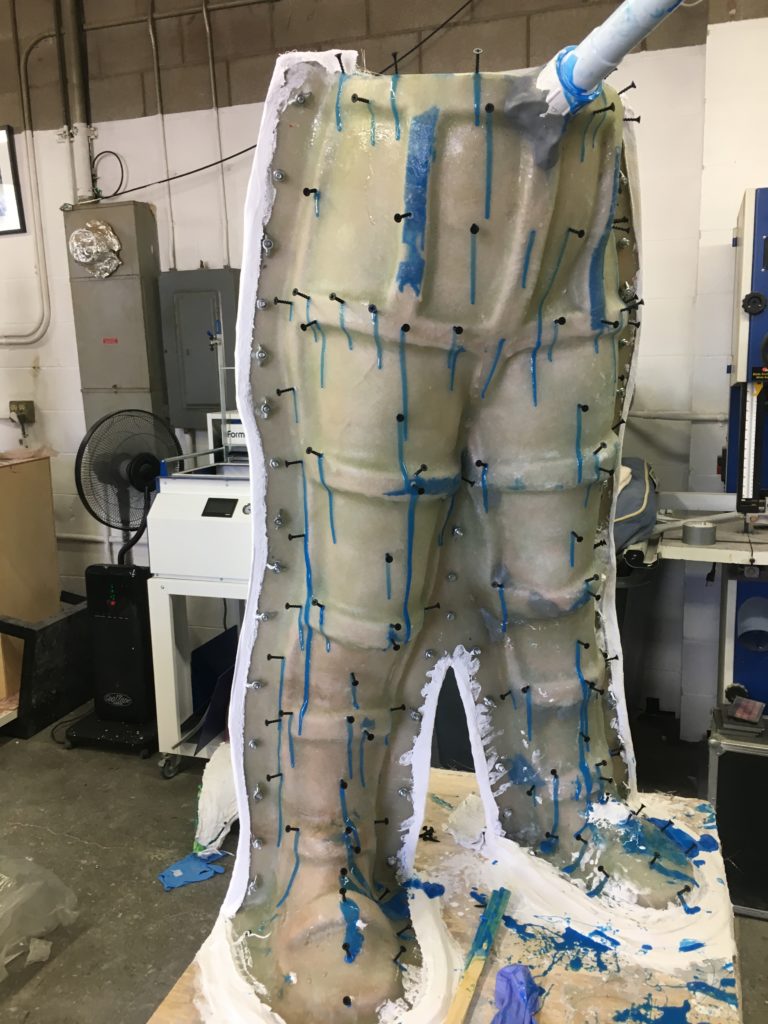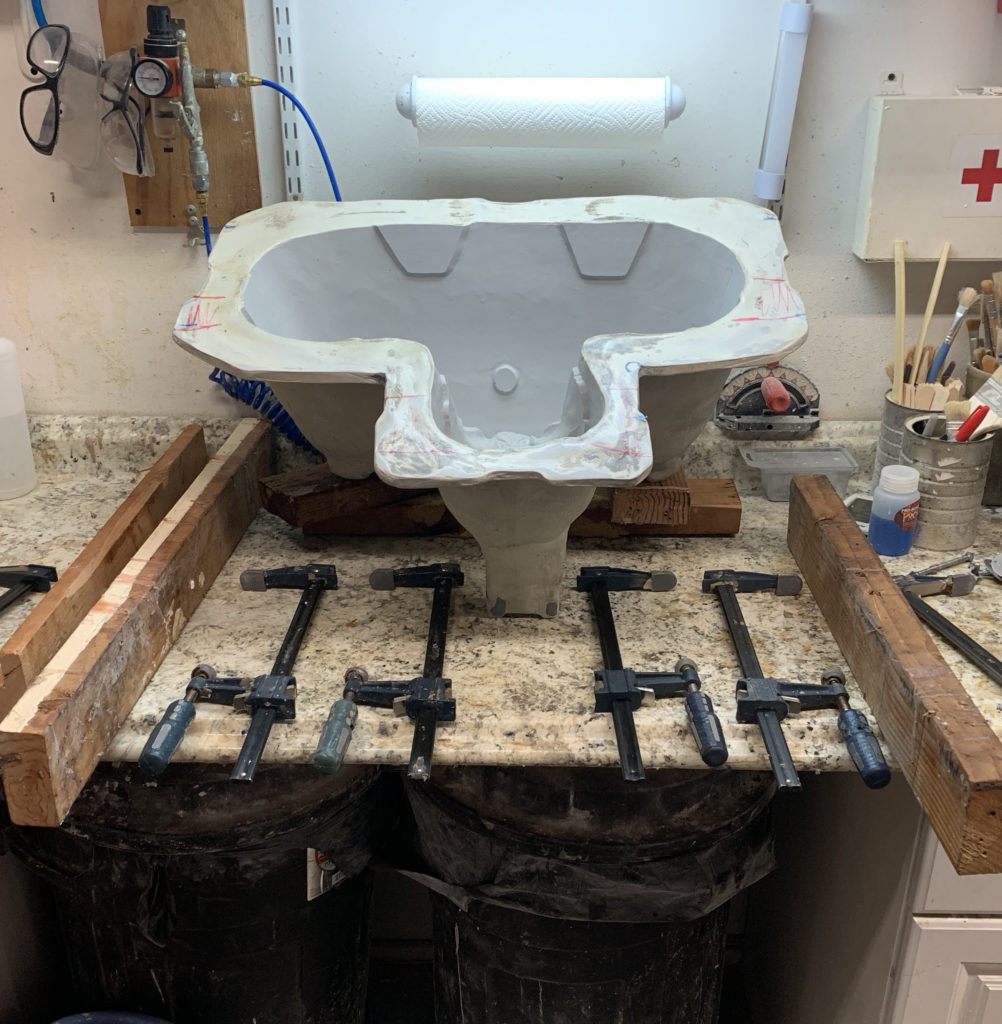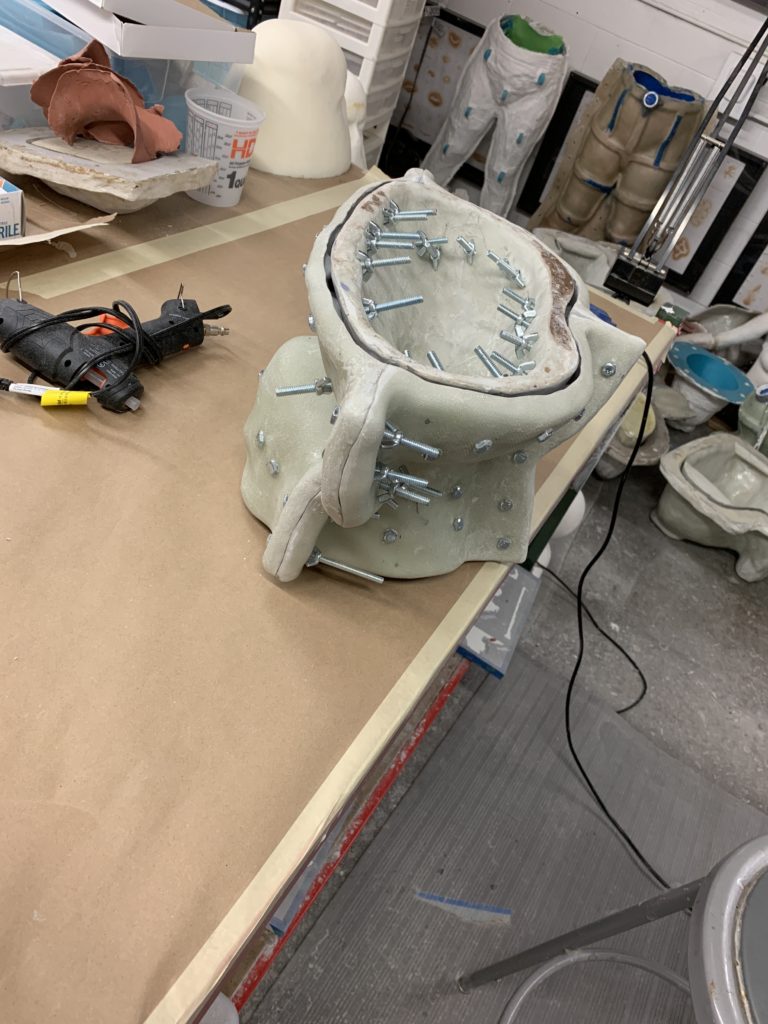MOLD MAKING


MOLD
MAKING
In order to create a prosthetic or other item that is used for or interacts with special effects makeup, we need to have a mold (or multiple molds) that we can cast it from.
This mold is the negative created from our sculpture. It contains all of the detail needed to reproduce the look approved for the character or creature.
At StevieFX, we build many different types of molds depending on the needs of the project. This may include any or a combination of the following:
- Body molds. When we’re molding something large for you, such as a body, we break it down into multiple pieces that fit together like a jigsaw puzzle. Having separate pieces:
- makes it easier to produce positives
- limits shrinkage
- strengthens structural integrity
- discourages warping
- makes it easier to produce positives
- Cored molds. When a prosthetic encircles a part of the body, we need to build a cored mold so that there will be a hollow space, or core, for the actor to fit inside of.
- Collapsible cores. Some prosthetics, such as a fat neck or arm for a slender actor, would be too obvious if they had seam lines from a two-part mold. If your actor needs a large prosthetic like these, we can use collapsible cores. These molds come apart in pieces, so they can be removed from inside of the prosthetic after it has set, leaving a smooth surface.
- Shrunken cores. To reduce the bagginess that could otherwise occur with cored prosthetics, we use shrunken cores to make them fit snugly against the skin. A shrunken core reduces the space inside of a prosthetic to make it fit closely, like a compression garment, for a more realistic look.
- Regular cores. Cores may also be put in place to provide space for puppet effects or to provide a skeleton for an effect such as an arm that can be “broken” and reset for repeated takes.
- Collapsible cores. Some prosthetics, such as a fat neck or arm for a slender actor, would be too obvious if they had seam lines from a two-part mold. If your actor needs a large prosthetic like these, we can use collapsible cores. These molds come apart in pieces, so they can be removed from inside of the prosthetic after it has set, leaving a smooth surface.
- Dental molds. Teeth tell a lot about a character. When we transform the look of an actor, a complete change may include the teeth. We sculpt the new teeth on a positive taken from the actor to create any type of teeth that production requires.
- Matrix molds. Known in the UK as silicon jacket molds, matrix molds are built in stages to produce consistent, highly detailed positives. The soft silicone mold is supported with a hard fiberglass resin shell for strength and stability.
- Plaster molds. One of the oldest forms of mold making, plaster molds are time-proven and well suited for use with certain materials, such as foam latex. It’s a very cost-effective material and works well for prosthetics and props that don’t need to be cast multiple times.
- Prosthetic molds. Once we have a life cast, we can create prosthetic molds can be created from any part of it. We might create a simple two-piece mold, sculpting just the nose or the ears, for example, to create whatever we need for the effect.
- Resin molds. Urethanes and epoxies are types of resins. Resin molds are much stronger and more durable than plaster molds and are a good choice for prosthetics or props that need to be cast over and over.
Silicone molds. Depending on what we are creating, we may want to use silicone for our molds instead of plaster, resin or other materials. For example, we may choose silicone because we are making matrix molds or casting hard objects that would be difficult to remove from a hard mold.
The Art of Mold Making
This is much more complex than it sounds. Good molds are made of the right materials and can be cast as many times as production requires. Inferior molds can fall apart or act in unexpected ways, which could potentially stop production or cause the director to compromise his or her creative vision.
A skilled mold maker is a master of materials. Before choosing a material for a particular mold, the mold maker has many considerations, including:
- Chemical Properties. The sole function of a mold is to produce a replica of the original sculpture out of another material. Because every material relates to other materials in different ways, the mold maker needs to choose materials for the mold that won’t inhibit or react negatively with the materials in the final product.
- Durability. A character that works on a project with a long duration will need molds that can reproduce the needed prosthetics over and over again without falling apart.
- Detail. Different mold materials capture different levels of detail and have different requirements. Which material is right depends on what is needed for the particular production.


The Creative Process at Stevie FX
Concept Art is part of a larger creative process at StevieFX, generally consisting of:
- Concept Art
- Life Casting
- Sculpting
- Mold Making
- Prosthetics or Silicone Props
See Tattoos to find out about the Creative Process for Tattoos.
Like most creative processes, this is not always linear. Some productions jump in at different phases of the process and there may be multiple iterations of any steps, if needed.
Each step in the process is a process in itself.
When your molds are ready, we can create Prosthetics
Want to learn more about how we can help bring your characters to life?

